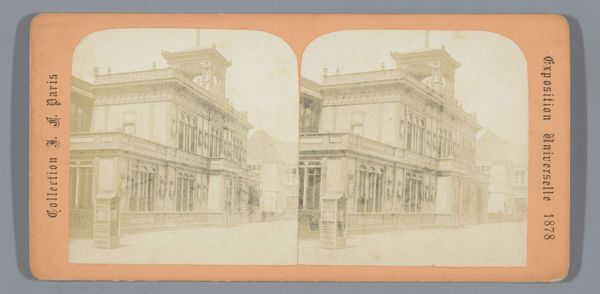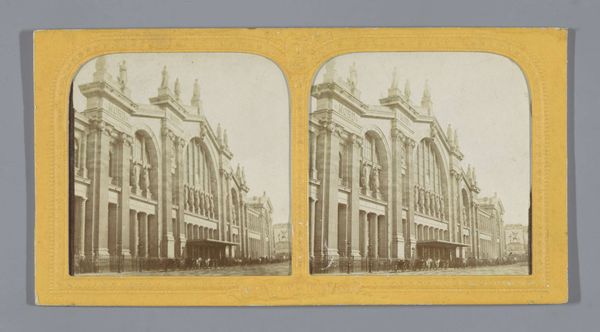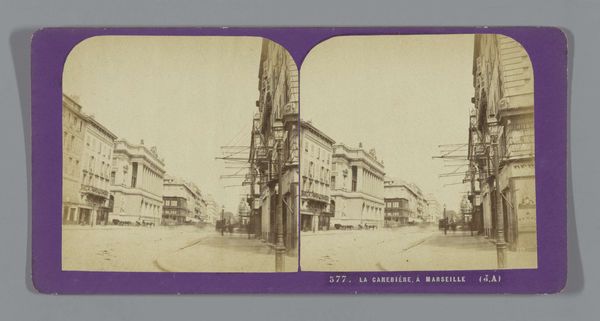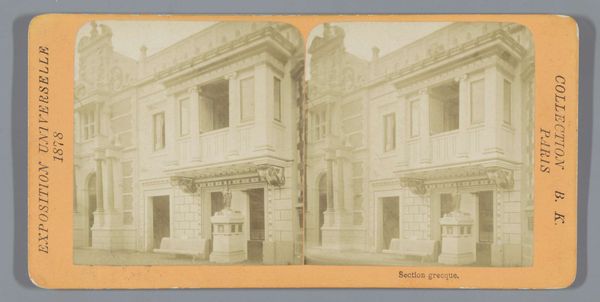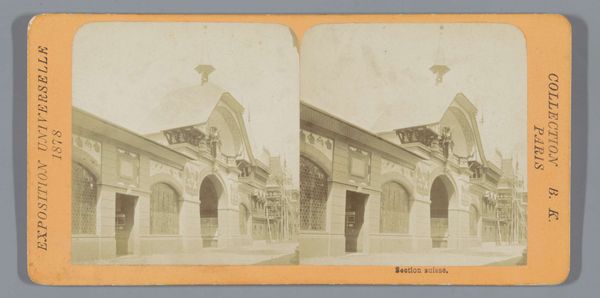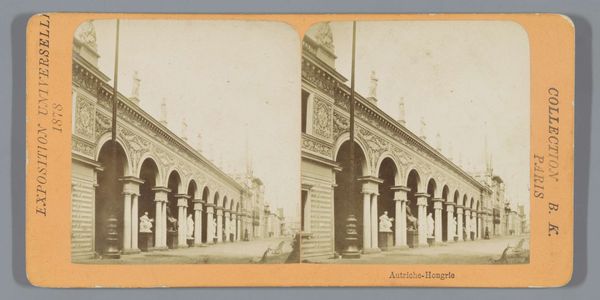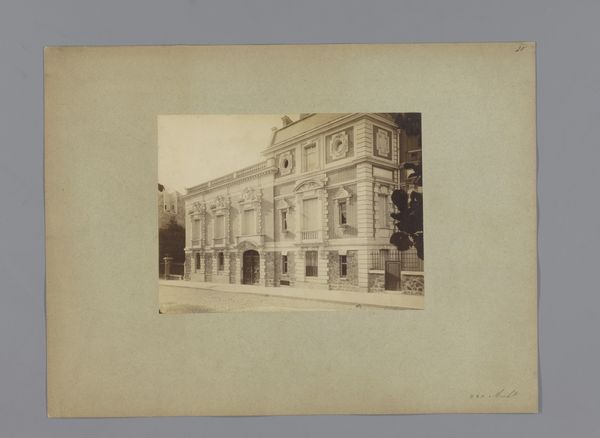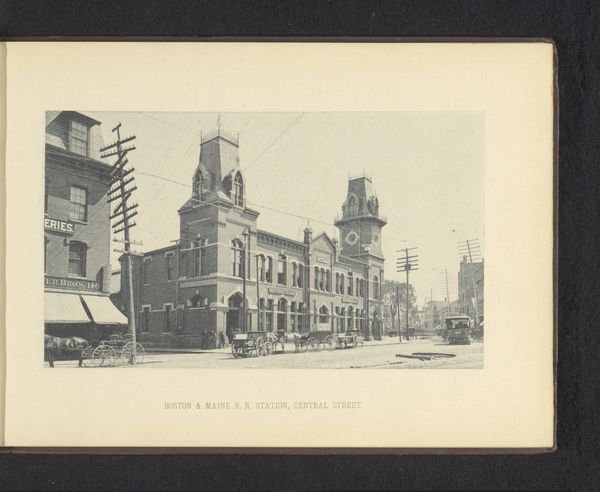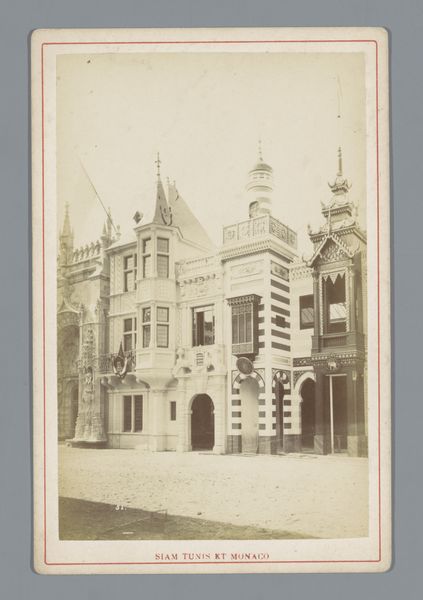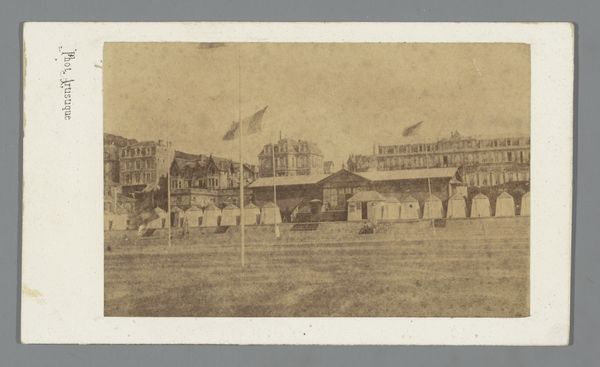
print, photography, architecture
#
water colours
# print
#
photography
#
cityscape
#
watercolour illustration
#
watercolor
#
architecture
#
realism
Dimensions: height 88 mm, width 175 mm
Copyright: Rijks Museum: Open Domain
Editor: So, here we have Adolphe Block's "Spaanse paviljoen op de Wereldtentoonstelling van 1878," created in 1878. It looks like a stereoscopic photograph or print, housed here at the Rijksmuseum. It depicts what I presume is the Spanish pavilion. I find the muted colors and the detailed architecture quite striking. What do you see in this piece? Curator: I see a potent symbol of nation-building and imperial projection. The World's Fair itself was a spectacle of global power, and the Spanish pavilion was a stage for asserting a specific national identity in a rapidly changing world. Consider the year: 1878. Spain had lost its major colonies decades before. This pavilion attempts to reconstruct a sense of grandeur. Editor: So it’s about Spain trying to re-establish itself on the world stage? How does the pavilion's design contribute to this message? Curator: Precisely. The architectural style, while vaguely Moorish, is also deliberately Europeanized to appeal to a broader audience. The aesthetic choices signal an attempt to reconcile its colonial past with a desire to be seen as a modern, progressive European power. Notice how the architecture merges distinct aesthetics into a unified front meant for external consumption and power display, masking internal issues such as societal divisions. Does that make sense? Editor: It does. So it’s not just a beautiful building; it’s a carefully constructed narrative of Spanish identity intended for an international audience. Almost like carefully staged propaganda. Curator: Exactly! It is imperative to analyze these symbols of power as deliberately crafted statements. Understanding the complex relationship between art, power, and identity encourages us to investigate what narratives are crafted and why, rather than merely passively looking. Editor: This gives me a completely different view on this piece. It makes me think of these international exhibitions in a completely new way, not just cultural exchanges, but complex power dynamics at play!
Comments
No comments
Be the first to comment and join the conversation on the ultimate creative platform.

